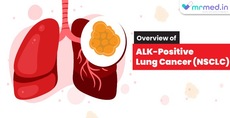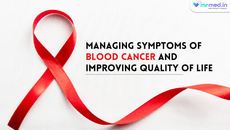Cancer treatment has evolved dramatically, with new therapies offering hope for improved outcomes. One promising approach combines Avastin (Bevacizumab), a targeted therapy, with chemotherapy. This powerful combination aims to boost treatment effectiveness and enhance patient survival rates.
However, it's important to consider both the potential benefits and risks. In this article, we explore how Avastin and chemotherapy work together and what patients can expect.
What is Avastin?
Avastin, also known by its generic name Bevacizumab, is a targeted therapy that works by blocking the growth of blood vessels that supply nutrients to tumours.
- By preventing the formation of new blood vessels, Avastin essentially ‘starves’ the tumour, slowing its growth and spread.
- It is used in the treatment of various cancers, including colorectal, lung, kidney, and certain types of brain cancer.
- Unlike conventional chemotherapy, which targets all rapidly dividing cells (including both cancerous and healthy cells), Avastin specifically targets the blood supply that nourishes cancerous tumours.
- This unique mechanism of action makes it an appealing option in the fight against cancer, particularly in combination with chemotherapy.
What is Chemotherapy and How Does It Work?
Chemotherapy is a common cancer treatment that targets rapidly dividing cells to kill or slow the growth of cancer.
It is typically used for aggressive or metastatic cancers and can be administered through oral medications, injections, or intravenous infusion.
However, chemotherapy has its limitations, as it is not selective and can affect both cancerous and healthy cells, making it a challenging treatment for many patients.
How Does Avastin Enhance Chemotherapy?
Combining Avastin with chemotherapy offers the potential to improve cancer treatment outcomes by enhancing the effectiveness of chemotherapy while addressing some of its challenges. Avastin plays a key role in this combination by:
- Inhibits Tumour Blood Vessel Growth: Avastin works by stopping the formation of blood vessels that supply tumours with oxygen and nutrients, essentially ‘starving’ them.
- Enhances Chemotherapy Effectiveness: By disrupting the tumour’s blood supply, Avastin may make chemotherapy medicines more effective, allowing them to reach the tumour more efficiently.
- Faster Tumour Shrinkage: In some cases, Avastin helps shrink the tumour more quickly, leading to better overall treatment outcomes.
By targeting tumour blood vessels, Avastin can potentially improve the overall response to chemotherapy, offering a more effective approach to cancer treatment.
What are the Benefits of Combining Avastin with Chemotherapy?
The primary benefit of combining Avastin with chemotherapy is the potential for improved treatment outcomes. Studies have demonstrated that this combination can:
1. Increase Survival Rates: Patients with cancers like colorectal and lung cancer have shown better survival rates when treated with Avastin in combination with chemotherapy compared to chemotherapy alone.
2. Delay Disease Progression: For many cancer patients, progression-free survival is a critical factor. Avastin has been shown to delay the progression of certain cancers when combined with chemotherapy, giving patients more time without the disease worsening.
3. Improve Quality of Life: By potentially reducing the size of tumours more effectively, the combination of Avastin and chemotherapy may alleviate some of the symptoms caused by tumour growth, such as pain and discomfort. This can greatly improve the quality of life for cancer patients during treatment.
4. Better Tumour Control: For cancers that are difficult to treat, such as ovarian and cervical cancer, Avastin combined with chemotherapy can help control the tumour more effectively, making it a vital treatment option.
What are the Side Effects of Combining Avastin with Chemotherapy?
While combining Avastin with chemotherapy can enhance treatment outcomes, it also comes with risks. Both therapies have potential side effects, and their combination may intensify these effects. Here’s what patients may experience:
1. Avastin Injection Side Effects: While Avastin targets cancerous tumours and spares normal cells to some extent, it is not entirely free of side effects. Common side effects of Avastin injections include:
- High Blood Pressure: Bevacizumab can cause an increase in blood pressure, which may require medication management.
- Bleeding and Clotting Problems: Some patients may experience bleeding or blood clots, particularly in the lungs, stomach, or brain.
- Protein in Urine: Avastin can cause protein to appear in urine, which may indicate kidney damage.
- Delayed Wound Healing: Avastin may impair the body’s ability to heal after surgery or injury, so patients undergoing surgery during treatment should proceed with caution.
2. Side Effects of Chemotherapy: Chemotherapy medicines are notorious for their side effects, some of which can be severe. Common side effects associated with chemotherapy include:
- Fatigue: One of the most common side effects, often leading to a significant decline in energy levels.
- Hair Loss: Chemotherapy attacks rapidly dividing cells, including those responsible for hair growth, which can lead to temporary hair loss.
- Nausea and Vomiting: Chemotherapy medicines can irritate the stomach and cause nausea, leading to discomfort for patients.
- Weakened Immune System: Chemotherapy suppresses the immune system, making patients more susceptible to infections.
- Mouth Sores and Diarrhoea: Some chemotherapy medicines can cause damage to the cells lining the digestive tract, leading to mouth sores and gastrointestinal issues.
The combination of Avastin and chemotherapy can intensify side effects, particularly fatigue and immune suppression. However, for many patients, the benefits of better tumour control and longer survival outweigh the risks.
Wrapping up
The combination of Avastin (Bevacizumab) and chemotherapy offers improved tumour control, progression-free survival, and quality of life. However, it carries risks such as high blood pressure, bleeding, and intensified chemotherapy side effects. Patients should work closely with healthcare providers to monitor these risks.
While not suitable for everyone, this approach offers hope for those who haven't responded to traditional treatments. Always consult a healthcare professional to tailor the best treatment plan.




